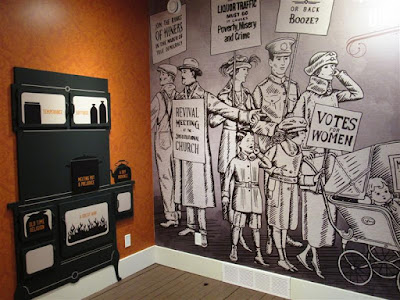Alberta Provincial Police Barracks
Coleman's newest museum opened just yesterday. The historical significance of the Alberta Provincial Police Barracks lies in the role that it played in the maintenance of law and order in the mining communities of the Crowsnest Pass from 1918 until the 1930s. It is one of the few APP buildings to survive and provides structural evidence of Alberta's attempt to undertake its own policing.
The APP had been created to combat the illegal importation of alcohol from British Columbia and the United States by the so-called “rum-runners” during Prohibition (1916 – 1924). The Barracks is where the Constable not only lived with his family but kept prisoners as well. It was a one-man operation and it was very dangerous 24/7.
"The death of Constable Lawson wouldn't have happened if it weren't for Prohibition, but Prohibition itself was the result of a complex mix of factors." Very, very informative.
It seems that every building has its story. This one tells the tale of Canada's most infamous rum running murder. It houses not only the story of the shooting, but also the trials and tribulations of policing prohibition, the court case surrounding the murder, as well as the repercussions of the entire event.
So what happened? Because of its proximity to the BC border, Coleman saw much conflict between the Police and the rum runners during Prohibition. The Pass’ most famous rum runner, Emilio Picariello, confronted Constable Lawson in front of the APP barracks after learning that his son had been injured by Lawson during a rum running incident earlier in the day. An argument ensued, shots were fired, and the Constable was killed in front of his young daughter, the only witness. No one is really sure who fired the fatal shot, but both Picariello and his companion, Florence “Filumena” Lassandro were eventually convicted of murder and executed just months before the repeal of prohibition in Alberta. Filumena Lassandro is the only woman to have been executed by hanging in Alberta.
The Layers of History were depicted here by the peeling away of wallpaper and paint. It seems almost a statement about what occurred here. We can paint over events but eventually, the layers will be peeled back revealing all that came before. That's history and it can be found in some surprising places... like in a little municipality in the Rocky Mountains of Canada.









0 comments:
Post a Comment